Are you ready to embark on an exciting journey into the world of visual storytelling with images? Get ready to dive into a realm where creativity knows no bounds, and where a single image can speak volumes, capturing hearts and minds in an instant. In this digital age, where attention spans are fleeting, mastering the art of visual storytelling is like having a secret key to captivating your audience.
Importance of Visual Storytelling
Picture this: you’re scrolling through your favorite social media feed, and what stops you in your tracks? It’s that striking photograph that perfectly curated image that conveys an emotion, tells a tale, or sparks your curiosity. That, my friend, is the magic of visual storytelling with images.
Visual storytelling is the art of weaving a narrative using visuals—photographs, illustrations, or even a series of images. It’s a universal language that transcends barriers and speaks to the core of the human experience. Whether you’re a budding photographer, an aspiring influencer, or simply someone who loves taking snapshots, visual storytelling has the power to amplify your message like never before.
Defining Visual Storytelling and Its Role in Conveying Narratives
Visual storytelling is like painting with pixels. It’s the art of using images to tell stories, conveying messages, moods, and concepts in a single frame. Imagine each image as a puzzle piece that, when combined, forms a tapestry of meaning. This method of storytelling taps into the innate human ability to decode visual information quickly and emotionally.
In a fast-paced world, where attention is short-lived, visual storytelling using images stands out as a captivating way to connect. It’s like inviting someone to experience and feel a moment through your camera’s lens.

Image by Charles Nambasi from Pixabay
How Visual Storytelling Differs from Traditional Text-Based Storytelling
Here’s the kicker: visual storytelling isn’t bound by the constraints of language. It’s a universal language that transcends words and cultural barriers. While text-based storytelling relies on words to create mental images, visual storytelling plunges straight into the realm of feelings, bypassing the need for translation.
Consider this: A sunset over a tranquil beach. Can you feel the warm hues wrapping around you? That’s the magic of visual storytelling—immersing your audience in a moment that lingers.
Benefits of Visual Storytelling
Now, you might wonder, why should you invest your time and energy in honing your skills in visual storytelling with images. Well, let me give you a sneak peek into the incredible benefits that await you:
- Connect on an Emotional Level: A picture is worth a thousand words, they say. But it’s not just about the number of words; it’s about the emotions those words convey. Visual storytelling enables you to connect with your audience on a deeper, emotional level. A well-crafted image can evoke joy, nostalgia, empathy, or even curiosity, forging a strong bond with your viewers.
- Capture Attention Instantly: In a world where content is constantly vying for attention, visual storytelling acts as a powerful magnet. An intriguing image has the ability to halt the endless scroll, making people pause and pay attention to what you have to say. It’s your chance to make a memorable first impression.
- Enhance Message Retention: Have you ever noticed how a compelling image stays with you long after you’ve seen it? Visuals have a remarkable impact on memory retention. When you weave your message into a visual narrative, you increase the likelihood of your audience remembering and engaging with your content.
- Ignite Creativity and Innovation: Exploring the art of visual storytelling sparks your creativity like never before. As you experiment with different compositions, angles, and visual elements, you’ll find yourself thinking outside the box and discovering new ways to convey your ideas.
- Stand Out in a Crowded Space: Whether you’re aiming to build your personal brand or promote a business, visual storytelling sets you apart from the crowd. It’s a way to showcase your unique perspective and personality, giving you a competitive edge in the world of modern communication.

Image by kordula vahle from Pixabay
Common Forms and Types of Photo Storytelling
Photo storytelling is a dynamic and versatile medium that allows creators to convey narratives, evoke emotions, and engage audiences through a visual journey. Here, we explore the common media forms and types of photo storytelling that artists and photographers often employ to craft compelling narratives:
-
Photo Essays:
A series of photographs presented in a sequence, often accompanied by captions or short text, to tell a complete story or explore a theme. Photo essays can be linear, thematic, or even experimental in their narrative structure.
-
Documentary Photography:
Capturing real-life moments, people, and events to document and communicate important stories, social issues, or cultural phenomena. Documentary photography seeks to inform and raise awareness.

Image by Arek Socha from Pixabay
-
Portraiture:
Using individual or group portraits to convey personality, emotions, or the essence of a subject. Portraits can be candid, posed, environmental, or conceptual, offering insight into the lives of those photographed.

Image by Sam Williams from Pixabay
-
Conceptual Photography:
Creating images that convey abstract concepts, emotions, or ideas through symbolic visuals and metaphorical compositions. Conceptual photography encourages viewers to interpret and engage with the narrative.
Capturing candid scenes and everyday life in urban or public spaces, often with a focus on portraying the human condition and the stories that unfold within ordinary moments.
-
Event and Lifestyle Photography:
Documenting events, celebrations, and daily activities to capture the essence of a moment or convey the atmosphere of a particular occasion.
-
Photographic Series:
Presenting a cohesive collection of images that revolve around a central theme, concept, or emotion. Photographic series allow for in-depth exploration of a subject.
Sharing stories and experiences from different locations, cultures, and landscapes through images that highlight the unique aspects of each destination.
-
Narrative Sequences:
Using a sequence of images to depict a chronological or cause-and-effect progression of events. Narrative sequences are often used to illustrate processes or tell stories with a clear beginning, middle, and end.
-
Environmental Storytelling:
Incorporating the surroundings and context of a subject to provide additional layers of meaning and narrative depth.
-
Fine Art Photography:
Creating visually striking and thought-provoking images that may not have a linear narrative but evoke emotions, provoke questions, and encourage contemplation.
-
Photojournalism:
Telling news stories and current events through photographs that capture real-time moments, conveying facts, emotions, and perspectives to inform and engage the audience.
-
Multimedia and Visual Storytelling:
Combining photographs with other media elements such as audio, video, text, and graphics to create a rich and immersive storytelling experience.
Photo storytelling takes various forms, shapes, and styles, allowing creators to adapt their narratives to different audiences, contexts, and creative intentions. Whether you’re crafting a poignant documentary series, capturing candid street scenes, or conveying abstract concepts through visual metaphors, the world of photo storytelling is as diverse as the stories waiting to be told.
Examples of Impactful Visual Storytelling with Images
Let’s journey into a few real-world instances that demonstrate the power of visual storytelling with images:
-
Ballet Dancer in Mid-Air:
A ballet dancer captured in mid-air during a graceful leap, portraying elegance, dedication, and artistic expression.

Image by David Mark from Pixabay
-
Elderly Couple Holding Hands:
An elderly couple walking hand in hand, showcasing a lifelong journey of love, companionship, and shared memories.

Photo by Depositphotos
-
Homeless Individual’s Eyes:
A close-up of a homeless person’s eyes conveys the challenges and stories hidden beneath the surface.

Image by Leroy Skalstad from Pixabay
-
Newborn’s Tiny Fingers:
A macro shot of a newborn’s tiny fingers gripping an adult’s thumb symbolizes the fragility and wonder of new life.

Photo by Wayne Evans
-
A crowd of Protesters:
A sea of people marching in a protest, representing collective voices and a fight for social change.

Photo by Supun D Hewage
-
Grandparents Teaching Grandchild:
A picture of grandparents teaching their grandchild a skill illustrates the passing down of wisdom and traditions.
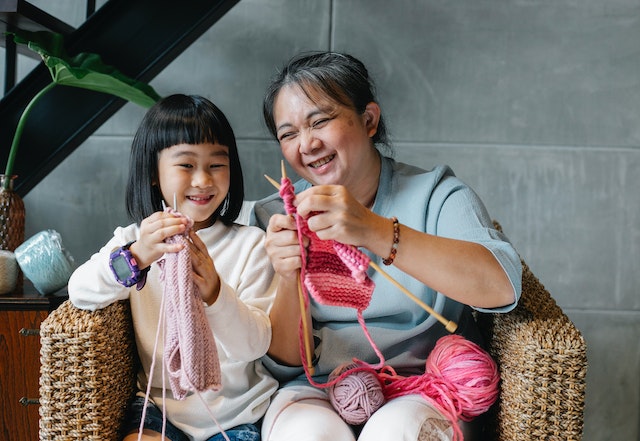
Photo by Alex Green
-
Marathon Runner’s Finish Line Triumph:
A marathon runner crosses the finish line, showcasing endurance, perseverance, and achievement.

Photo by RUN 4 FFWPU
-
Steam Locomotive in Motion:
A vintage steam locomotive in motion, conjuring feelings of nostalgia and progress.

Photo by Pixabay
-
Portrait of poor child:
a photo of a poor dirty child conjuring the suffering of poor children in poor cultures.

Image by billy cedeno from Pixabay
-
Old Couple Dancing:
An elderly couple dancing gracefully, showcasing enduring love and a lifetime of shared experiences.
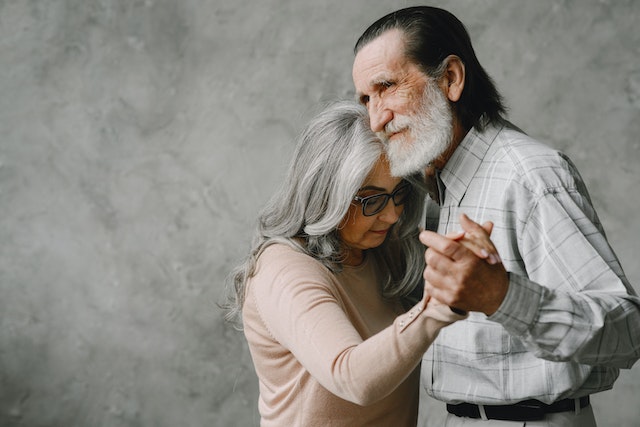
Photo by Gustavo Fring
-
Street Vendor’s Expressions:
Expressive faces of street vendors in a bustling market, showcasing daily life and diverse characters.

Photo by Mehmet Turgut Kirkgoz
-
Artisan Crafting Pottery:
An artisan shapes clay on a pottery wheel, representing craftsmanship and the transformation of raw materials.
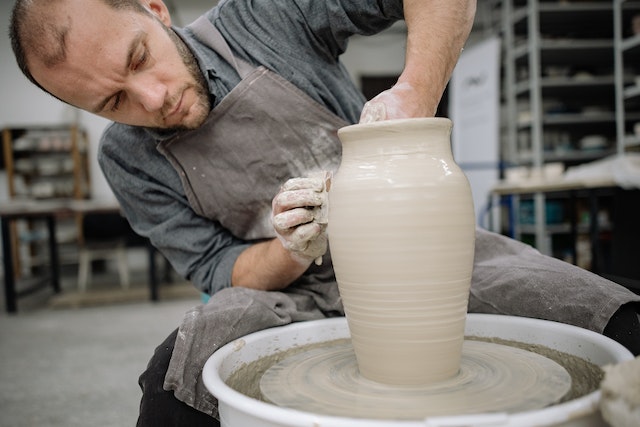
Photo by Yan Krukau
-
Silhouetted Lovers on a Beach:
Lovers silhouetted against a beach sunset, embodying romance, connection, and intimacy.
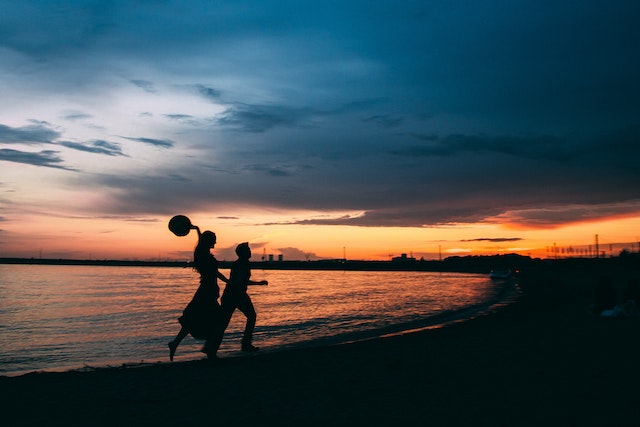
Photo by Shuvalova Natalia
-
Street Performer’s Passion:
A street performer passionately playing a musical instrument, illustrating talent, artistry, and dedication.
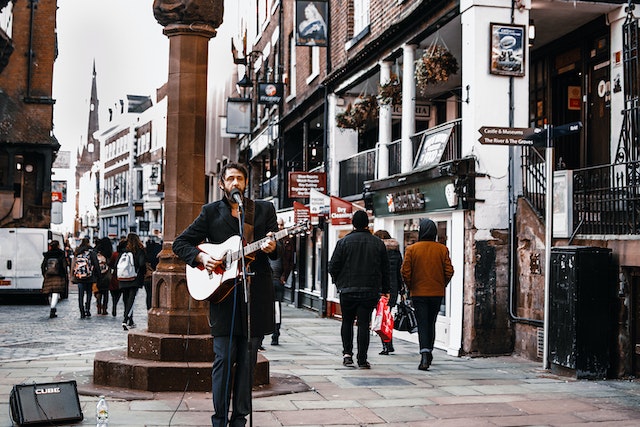
Photo by Lisa Fotios
-
First Day of School Excitement:
Children excitedly head to school on their first day, capturing anticipation, learning, and new beginnings.
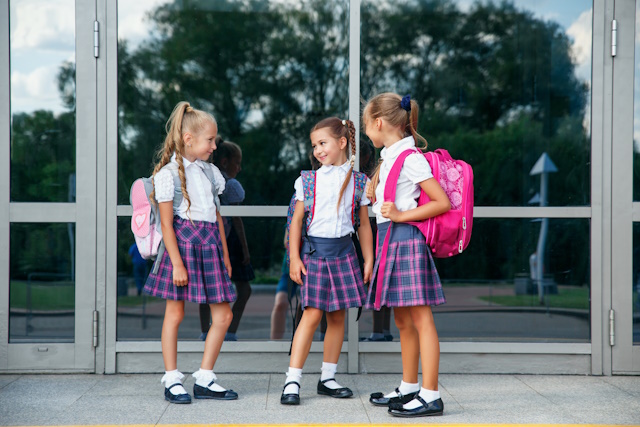
Photo by Depositphotos
Each of these examples encapsulates a unique visual story, weaving together emotions, experiences, and moments that resonate with viewers. Through the lens of photography, visual storytelling unveils the extraordinary within the ordinary, inviting us to connect, reflect, and engage with the world around us.
Techniques for Selecting and Using Images that Resonate with the Audience
Crafting images that evoke emotions and establish a strong connection requires careful consideration and intentionality. Here are some techniques to keep in mind:
- Authenticity: Choose images that capture genuine moments and emotions, avoiding overly staged or contrived shots.
- Composition: Pay attention to composition, framing, and visual elements to guide the viewer’s focus and enhance emotional impact.
- Color Palette: Colors evoke specific emotions. Use color psychology to choose hues that align with the intended emotional tone.
- Human Stories: Human experiences are relatable. Showcase stories that reflect universal themes like love, courage, and resilience.
- Contrast: Contrast between light and shadow can create drama and depth, enhancing the emotional intensity of an image.
- Symbolism: Incorporate symbolism or metaphor to convey layers of meaning and encourage viewers to reflect.
- Timing: Capture decisive moments when emotions are raw and authentic, enhancing the image’s emotional resonance.
- Narrative Arc: Craft a visual narrative with a clear beginning, middle, and end to engage the viewer and evoke a journey of emotions.
Crafting Compelling Narratives with Visuals
In this section, we’ll unravel how images breathe life into narratives, explore the key elements of a compelling visual tale, and guide you through a step-by-step process to craft your own narrative masterpiece.
How Images Enhance the Storytelling Experience
Images have an extraordinary ability to transcend language barriers and evoke emotions that words alone may struggle to convey. They serve as windows to worlds, inviting viewers to feel, connect, and embark on a journey alongside the characters and scenes depicted. Whether it’s the joy in a child’s laughter, the tension in a climactic moment, or the serenity of a landscape at dawn, images hold the power to amplify the impact of a narrative, making it more vivid and memorable.

Image by Julia Sezemova from Pixabay
Exploring the Elements of a Compelling Visual Narrative
- Characters: Central to any narrative are the characters that breathe life into the story. Images give them faces, expressions, and emotions, making them relatable and engaging.
- Setting: The backdrop against which the story unfolds sets the stage and mood. Images of locations, environments, and landscapes transport viewers to the heart of the narrative.
- Conflict and Resolution: Images can capture pivotal moments of conflict, tension, and resolution, adding depth and intrigue to the storyline.
- Emotion: The visual portrayal of emotions—be it happiness, sorrow, love, or surprise—creates a strong empathetic bond with the audience.
- Action and Movement: Capturing movement and action sequences lends a dynamic quality to the narrative, propelling the viewer into the heart of the story.
- Details: Intricate details and close-up shots provide nuance and context, offering insights into characters’ lives and the world they inhabit.
Step-by-Step Guide to Structuring a Narrative Using Images
- Choose Your Theme: Decide on the central theme or message you want to convey through your visual narrative. It could be love, adventure, resilience, or any emotion or concept you wish to explore.
- Develop Your Characters: Create characters with distinct personalities and emotions. Craft images that reveal their traits and interactions.
- Map out the Plot: Outline the sequence of events or moments that will unfold in your narrative. Consider the beginning, middle, and end.
- Select Key Scenes: Choose pivotal scenes that capture the essence of your narrative and advance the storyline.
- Capture Emotions: Focus on capturing the emotions and expressions that drive the narrative. Each image should resonate with the viewer.
- Use Composition: Pay attention to composition, framing, and visual elements to guide the viewer’s attention and enhance storytelling.
- Create a Flow: Arrange your images in a sequence that creates a natural flow, guiding the viewer from one moment to the next.
- Add Captions or Text: If needed, add captions, text, or brief descriptions to complement the images and provide context.
- Editing and Enhancing: Use editing tools to enhance the mood, colors, and visual impact of your images.
- Test and Refine: Share your visual narrative with friends or fellow photographers for feedback. Make adjustments as needed.
Crafting a compelling visual narrative is a thrilling adventure that demands creativity, insight, and a keen eye for detail. Through the art of visual storytelling with images, you have the power to create worlds, evoke emotions, and spark imaginations. So, pick up your camera, unleash your creativity, and let your images spin tales that resonate, inspire, and leave a lasting impression on your audience. Your journey as a visual storyteller has just begun, and the possibilities are as boundless as your imagination.
Tools and Resources for Visual Storytelling:
Embarking on a visual storytelling journey? Let’s equip you with the essential tools, platforms, and resources that will empower you to weave captivating narratives through images. From software to online communities, we’ve got you covered on your quest to master the art of visual storytelling.
Software and Platforms for Creating Visual Narratives
- Adobe Creative Suite: The powerhouse of creative tools, including Photoshop for image manipulation and Lightroom for enhancing your photos.
- Canva: A user-friendly platform with pre-designed templates for creating visually appealing graphics and image-based stories.
- VSCO: Known for its presets and editing tools that add a touch of artistic flair to your photos.
- Snapseed: A mobile app offering powerful editing features to enhance and transform your images on the go.
- Piktochart: Ideal for crafting visual narratives through infographics, presentations, and interactive content.
- Unfold: Perfect for creating elegant and engaging Instagram Stories, adding a visual twist to your narratives.
Online Communities and Forums for Sharing and Learning Visual Storytelling
- Instagram: The visual hub where photographers and storytellers share their work and connect with fellow enthusiasts.
- 500px: A community of photographers showcasing their best work and providing inspiration.
- Flickr: A platform to share, discuss, and appreciate photography, allowing you to engage with a global community.
- Behance: A platform for showcasing your visual projects and connecting with other creatives.
Recommended Resources, Tutorials, and Courses to Enhance Skills
- Coursera’s Visual Storytelling Course: Learn the fundamentals of visual storytelling, from composition to narrative techniques.
- Skillshare Photography Classes: Explore a wide range of photography and visual storytelling courses taught by experts.
- YouTube Photography Channels: Channels like Peter McKinnon and Mango Street offer insightful tutorials and creative inspiration.
- The Art of Photography Podcast: A podcast exploring various aspects of photography and storytelling.
- National Geographic Photography Workshops: Join renowned photographers on immersive workshops to enhance your skills.
- Visual Storytelling Books: Titles like “The Photographer’s Eye” by Michael Freeman and “Visual Storytelling: Infographic Design in News” by Liu Yikun offer valuable insights.
Conclusion
In the realm of visual storytelling with images, you hold the power to transport others to new worlds, evoke deep emotions, and share powerful narratives. Through every click of the camera, you have the ability to create a lasting impact on your audience, making them part of the stories you tell.
So, embrace the art of visual storytelling, let your imagination soar, and continue capturing moments that touch hearts and inspire minds. Your journey as a visual storyteller has just begun, and the possibilities are endless.
Thanks for reading, I hope you enjoyed the article, in case you have any questions just drop them below & I will be happy to answer you.
The featured Image by Pexels from Pixabay
If you enjoy the site, don’t forget to subscribe, we will only inform you when a new article is posted.










Hi, thank you for highlighting the importance of visual storytelling with images. It’s a powerful way to convey emotions and messages. I’m curious, what advice or techniques would you recommend to someone looking to enhance their skills in this art form? Are there any specific photographers or visual storytellers whose work you find particularly inspiring in this context?
Thanks for your kind words about my blog post. I’m glad you found it helpful. Here are a few tips and techniques that I would recommend to someone looking to enhance their skills in visual storytelling with images:
Pay attention to composition: The composition of your image is essential for telling a story. Think about the elements of your image and how they work together to create a visual narrative.Use light and shadow: Light and shadow can be used to create mood and atmosphere in your images. Experiment with different lighting techniques to see how they can affect the mood of your story.Choose your subjects carefully: The subjects of your images should be relevant to the story you are trying to tell. Choose subjects that are interesting and engaging, and that will help to convey your message.Tell a story: Your images should tell a story, whether it’s a simple story or a complex one. Think about the beginning, middle, and end of your story, and how you can use your images to create a visual narrative.Use color: Color can be used to evoke emotions and create a sense of atmosphere in your images. Choose colors that are appropriate for the story you are trying to tell.Experiment: There are no hard and fast rules in visual storytelling. The best way to learn is to experiment and try new things. Don’t be afraid to experiment with different techniques and see what works for you.
Here are a few photographers and visual storytellers whose work I find particularly inspiring in this context:
Henri Cartier-Bresson: Cartier-Bresson is considered one of the pioneers of modern photography. His work is known for its striking compositions and use of light and shadow. Steve McCurry: McCurry is an American photojournalist who is best known for his iconic images of Afghanistan and other parts of the world. His work is known for its beauty and its ability to capture the human condition.Ansel Adams: Adams was an American landscape photographer who is best known for his dramatic use of light and shadow
This is a very insightful post on the visual storytelling through images. The step by step guide on how to structure a narrative with a picture is very detailed and easy to follow. Reading about the different forms and types of photo storytelling was very interesting, My favorite was event and lifestyle photography, seeing this on my Instagram feed always brings me joy seeing others celebrating.
What is your favourite type of phot storytelling and why?
I’m glad to hear that you found the post insightful and that the step-by-step guide was easy to follow. Visual storytelling through images is a fascinating art form. While I don’t have personal preferences or feelings, many people appreciate various forms of photo storytelling for different reasons. Event and lifestyle photography, as you mentioned, can be captivating because it captures the joyous moments in people’s lives, fostering a sense of connection and celebration. Each type of photo storytelling has its unique appeal, and it often depends on individual tastes and interests.